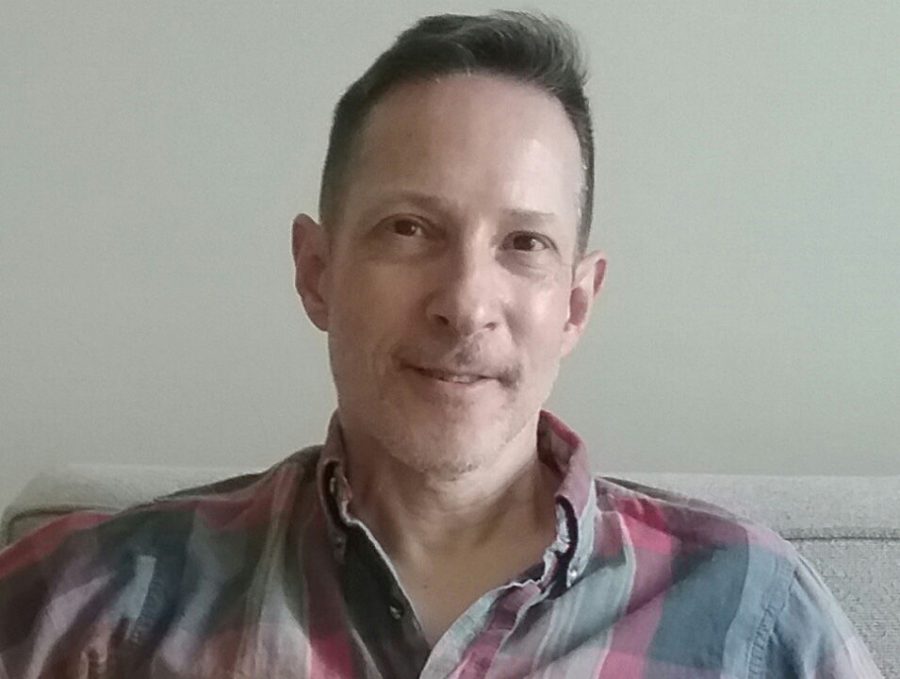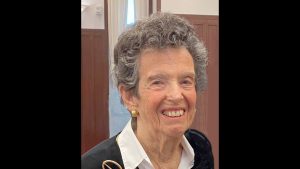An updated ‘Paint Your Wagon’ is en route to the Muny
Published July 18, 2019
If you know Jon Marans strictly as the author of “Old Wicked Songs,” the Muny has a surprise in store for you, a surprise called “Paint Your Wagon.”
True, the musical about the California Gold Rush is not an obvious follow-up to the sensitive, immensely moving, widely acclaimed two-hander about Jewish identity after the Holocaust.
Marans, however, detects a connection: the tension between tradition and modernity, a tension that’s exacerbated when under the stress of changing circumstance.
“I think that push-pull is there in all my work,” the playwright said.
Maybe that was not always part of “Paint Your Wagon.” But it is now. Thanks to Marans’ new book, the reimagined show opening July 27 at the Muny tells the story of the lives and loves of the Gold Rush miners in an original fashion.
Even if you aren’t a close observer of New York theater, there’s a good chance that you know Marans’ work. During its 1997-98 season, the Repertory Theatre of St. Louis mounted “Old Wicked Songs,” his drama about the relationship between a young American pianist and the crusty music professor he travels to Vienna to study with.
It played in the Rep’s intimate Lee Studio Theatre, where it proved so popular that the Rep first extended its run, then scheduled it to play the very next season on the Browning Mainstage.
Then, three years ago, the New Jewish Theatre staged its own production of “OWS.” Starring Jerry Vogel and Will Bonfiglio under the direction of Tim Ocel, it won the St. Louis Theater Circle Award award for outstanding production of a drama for 2017. By that time, the play had brought Marans the L.A. Drama-Logue Award, the New York Drama League Award and a Pulitzer Prize nomination.
Marans entered new territory with “Paint Your Wagon,” even though he’s written other musicals and wrote the liner notes for the soon-to-be released cast recording of the Joel Grey-directed, Yiddish-language production of “Fiddler on the Roof.” Muny audiences increasingly welcome new shows, such as “Kinky Boots” and “Matilda.”
“Paint Your Wagon” isn’t a new-to-Forest Park show like those; it has played the Muny before.
Exactly once. In 1956.
In the musical theater hierarchy, lyricist Alan Jay Lerner and composer Frederick Loewe stand merely a notch below Rodgers and Hammerstein. But “Paint Your Wagon” was never in a class with the L&L megahits “My Fair Lady” and “Camelot.” Not even a haunting song, “They Call the Wind Maria” (pronounced Mariah), was enough to save the 1969 movie version.
The trouble, everyone always suspected, was the book. Marans thinks so, too.
When he first looked at “Paint Your Wagon” at a director’s suggestion, Marans felt discouraged.
“I thought there were so many problems, I would have to start from scratch,” he said. “But the Lerner and Loewe (organization) agreed to that. Even when I kept the same names, they aren’t the same characters.”
Apart from the convoluted love story, he points out, “Paint Your Wagon” made it seem “as if all the ’49ers (gold prospectors) were white American men.
“But in fact, the whole world converged on California. They were all looking for something better.”
The new script, which includes most of the original songs though sometimes in different contexts, as well as a few songs that had been discarded, depicts that multicultural atmosphere. Ben, a Southern widower looking for gold, remains the male lead.
But Marans has given the character more dimension: guilt about his late wife, a driving compulsion to treat other people fairly.
“I think what I write about most is social conscience,” he said.
Marans’ other plays deal with discrimination against gay men (“The Temperamentals”) and the struggles of a young, Orthodox couple raising an autistic child (“A Strange and Separate People”).
In his “Paint Your Wagon,” the female roles are beefed up considerably. The male characters come from all over. There are miners from Ireland, from Latin America, from Poland. (“You can make up your own mind” about whether he’s Jewish, Marans said, a smile in his voice.)
Nor are they all white. There are black characters, including a free man and one still enslaved although he’s no longer in the South. Marans also added a pair of Chinese brothers, noting that “in 1849, it was easier to reach California from China than from the (U.S.) Eastern seaboard.”
Marans calls the East Coast home. He grew up in Silver Spring, Md., son of a family that mixed two traditions in Jewish-American life: observant and assimilated.
He suspects that his father, chemist Nelson Marans, holds some kind of record for writing letters to editors, sending them to papers all over the map. In one landmark year, 1,000 of them saw print.
“His letters are very political, angry letters about social injustice,” Marans said. “For me, that’s Judaism.”
Sundays were for family. At his grandfather’s home, the three of them – grandfather, father and son – would study the previous day’s Torah portion.
“After that, for a treat, my grandfather would read us old Bintel Briefs (the long-running advice column in a Yiddish newspaper, Der Forverts, or The Forward) from the early 1900s. They were great!”
Marans’ mother, Rhoda, came from a different kind of Jewish family. A New Yorker educated at an Episcopalian prep school and Smith College, she is “a brilliant woman,” said Marans. “And she loves theater. We had the records of every single Sondheim musical.”
She also would “sit outside, by the door, to eat her shrimp cocktail,” he recalled. “She wouldn’t bring it into the house. But she would eat it.”
A teacher, Rhoda Marans embarked on a second, successful career as book reviewer.
“We’d get a stack of books every two weeks,” he said. “I was a teenager. Of course I looked for the dirtiest ones I could find!”
Today, Marans, who is single, and his sister, who is married, both live in New York; recently their parents moved there, too.
When Marans visited St. Louis once before, he was impressed by the ornate glamour of the Fox Theatre. On his “Paint Your Wagon” trip, he hopes to see buildings associated with the life of his own favorite playwright, Tennessee Williams. He particularly wants to get to the Jewel Box, a spot mentioned in “The Glass Menagerie.”
That, of course, is in Forest Park not far from the Muny. Like many New York theater artists, Marans has heard about the huge outdoor theater and is eager to find out what it’s really like. Not only will he be here through rehearsal, he plans to stay for the whole run and watch “Paint Your Wagon” every night.
“Where,” he asked, “am I ever going to see ‘Paint Your Wagon’ on this scale again?”
‘Paint Your Wagon’
WHEN: July 27-Aug. 2; 8:15 p.m.
WHERE: The Muny in Forest Park
HOW MUCH: $15-$105, plus the free seats
MORE INFO: www.muny.org















